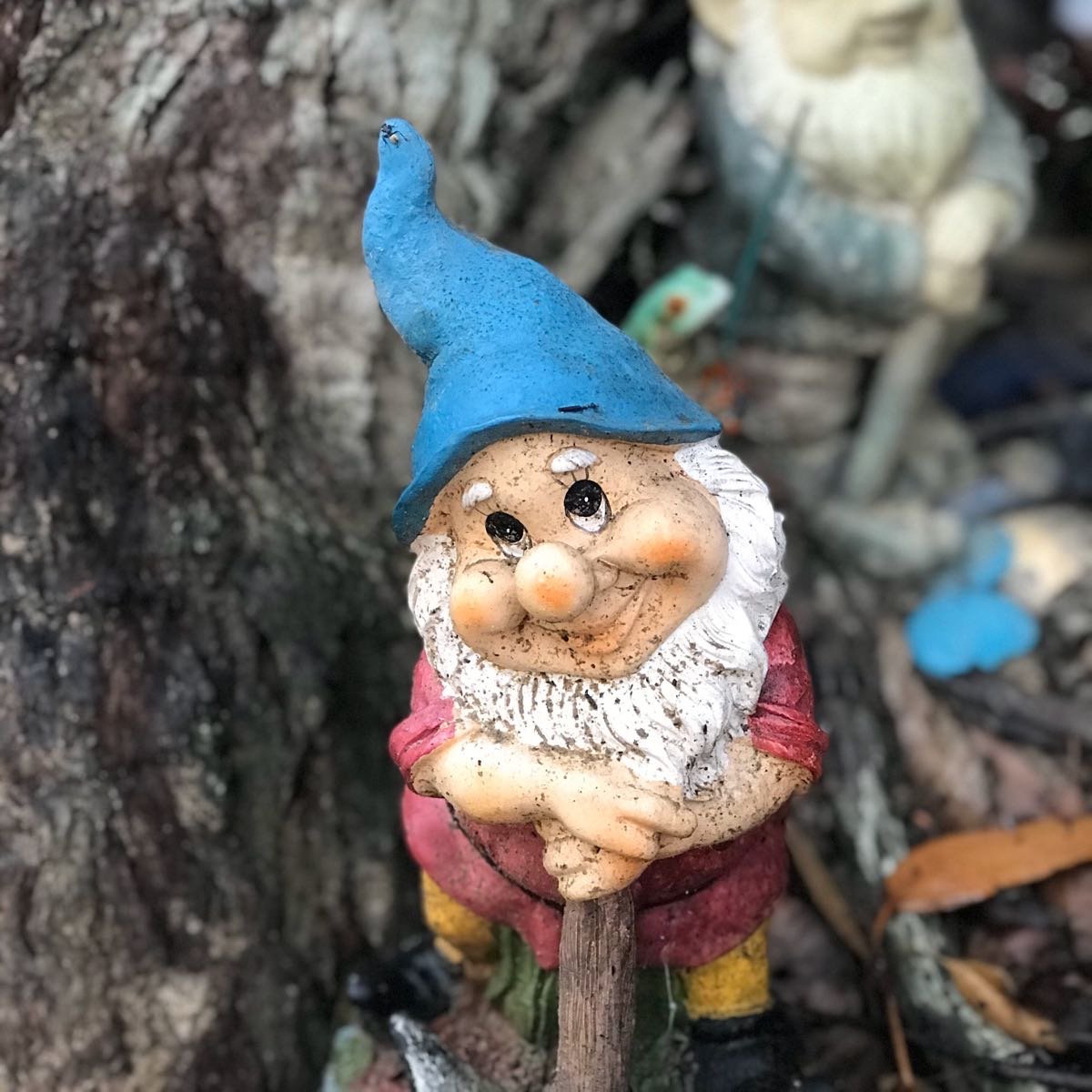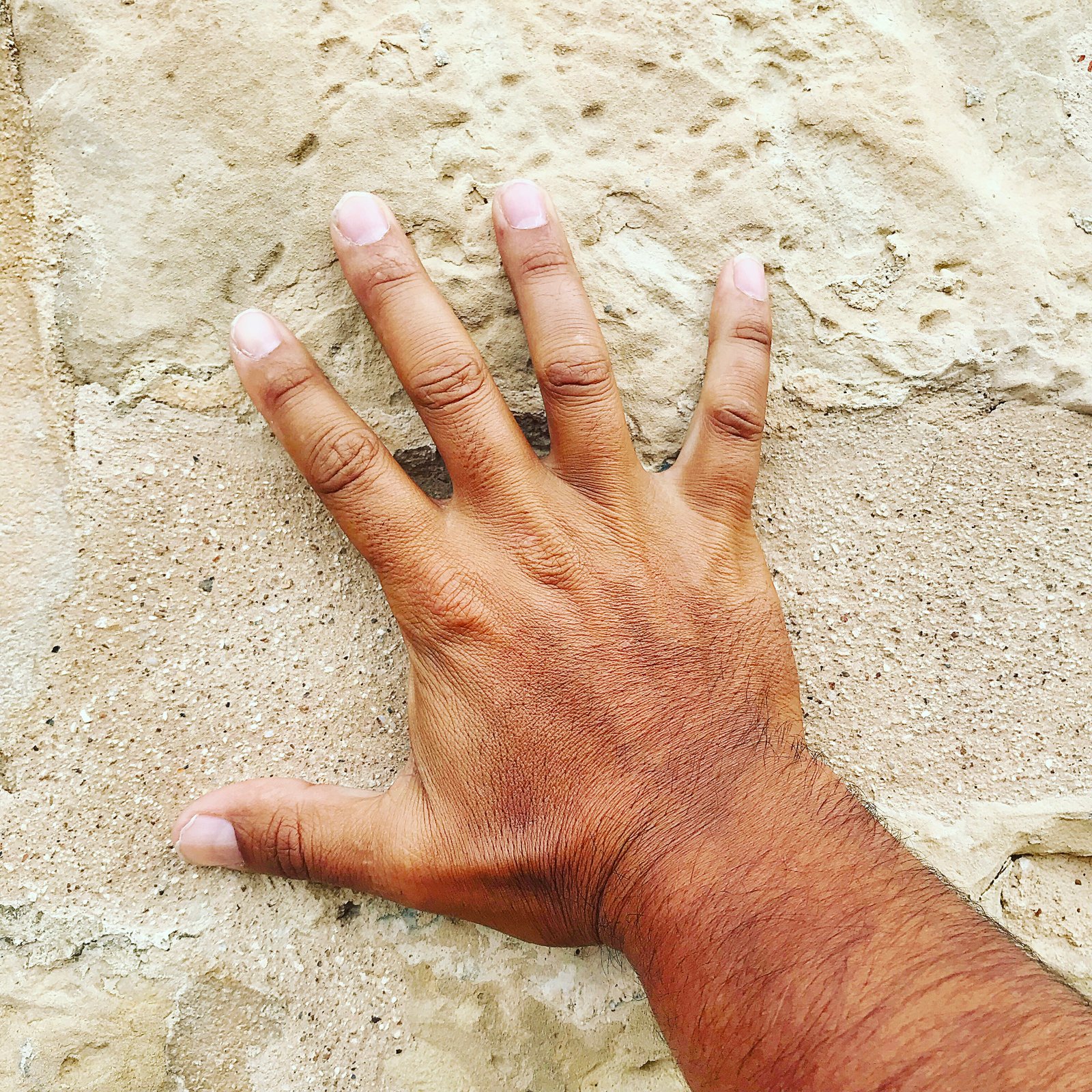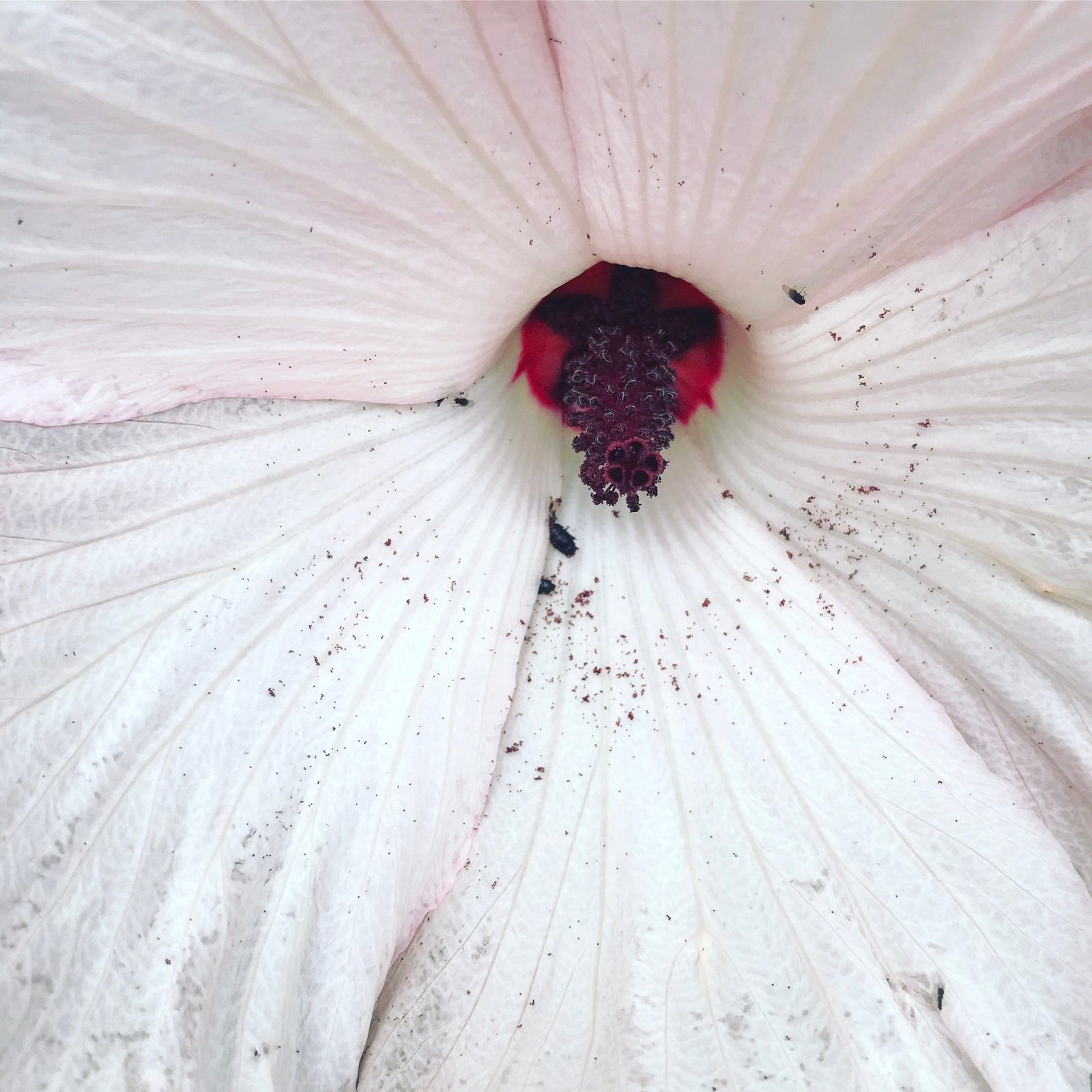ReminiScent: Carob Trees and the Power of Smellmory
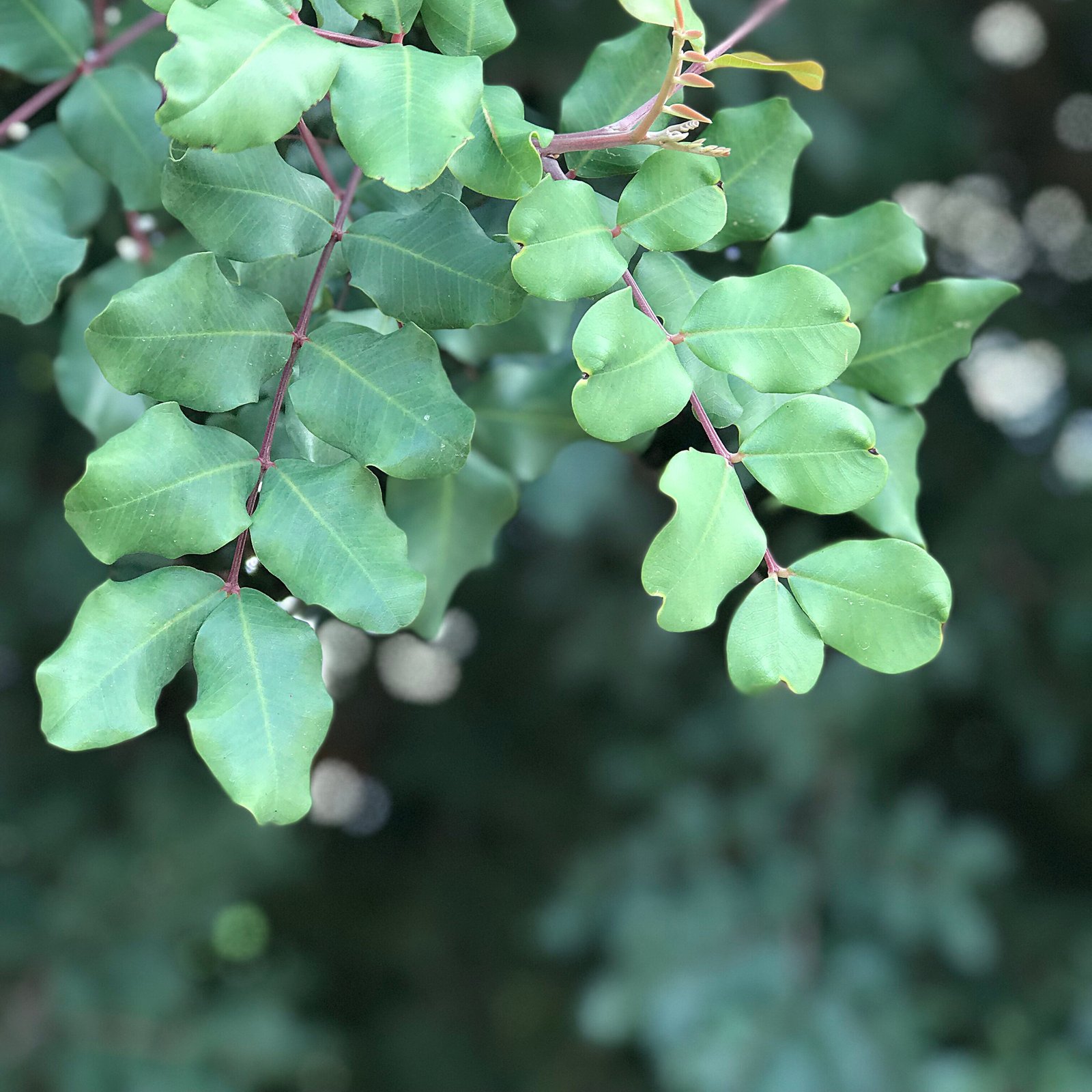
ReminiScent: awaking memories through scent. Smell is a powerful sense that can transport us back to a time past. Smells can ‘re-mind’ us of past moments. For me my parting memory of Malta was walking through the fields and valleys, the hills and along the coastal cliffs and smelling the scent of carob blossoms in the air. This peculiar odour, produced by male trees is strongest at the height of the flowering season in Autumn.
It is a distinctive kind of smell and it stopped me in my tracks when I first noticed it a week earlier walking the Jesus Trail in Israel. We passed a number of carob trees in bloom and the smell stayed in my mind.

Smellmory
Our sense of smell can have a profound effect on our mood, behaviour, emotions and memory. Smells infuse into our psyche and the cells of our body, like stored memories, to be released when triggered by the smell in the future.
Store-ies
Smell creates connections. Smell can provide a powerful thread to our past. The faint smell in the air can trigger latent memories, seemingly long forgotten.
Smell can release experiences, stories stored within the very DNA of our being.
Smell can also connect us to shared stories. In fact, smell can connect us to the history of ancestors, can transcend time and space, taking us back to the lives of those who came before us.
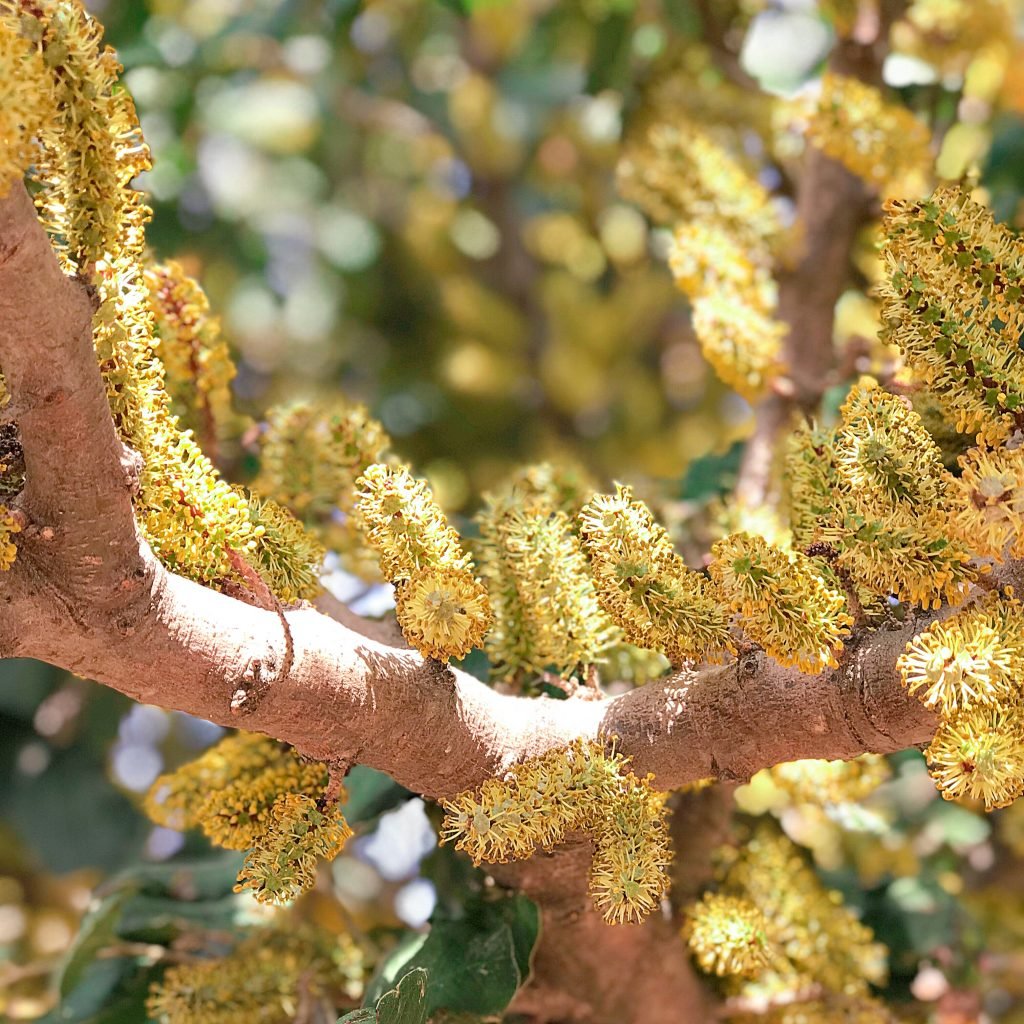
Carob
Throughout my short time in Malta I encountered many carob trees. Each discovery provided me a link to my past and a deeper understanding of my heritage. It also instilled in me the importance of preserving our natural heritage – there is a lot more at stake than losing ‘a few trees’, we are in danger of losing our identity, our psyche, our soul.
Harrub
In Maltese, the word for a carob tree is ‘harrub’. Speaking to my mother about carob trees she remembers as a child that she used to feed the carob pods to their livestock. She also recalls that her father had told her that in World War II during the Seige of Malta, when the Maltese were under intense enemy bombardment and people were starving that he would give carob pods to his neighbours to eat.
Knowing these links to my mother’s past added another layer of appreciation for these trees.
Locusts and Wild Honey
In English, carob trees are also referred to as St John’s Bread, Locust Tree, or Locust Bean. In fact, St John the Baptist is reported by Matthew 3:4 in the New Testament to have subsisted on “locusts and wild honey”. It is thought that “locusts” may refer to carob pods, rather than to grasshoppers. [1]

Valley of Honey
As I pen these words, I see the significance and the many connections that carob trees have for me. One of my encounters with carob trees on my latest journey to Malta after a quarter of a century hiatus was to walk down into the Valley of Honey.
Wied il-Ghasel as the valley is known is situated in the centre of the island close to the famous domed church of Mosta. This church, also known as the Parish Church of the Assumption or the Rotunda of Mosta, dominates the skyline. The design is based on the Pantheon in Rome and is the third largest unsupported dome in the world. During World War II, the church narrowly avoided being destroyed when a German aerial bomb pierced the dome during mass, fell to the floor and failed to explode. This was seen by the Maltese as a miracle. [2]

As I walked across a high bridge that spans the valley and down a little pathway I was immediately enveloped by the scent of carob trees lining rubble walls. The scent had tones of vanilla which temper its peculiar scent and welcomed me into this beautiful earthly paradise.
The valley derives its name from the honey that according to folklore was so abundant in the past that the bee hives situated in the cracks in the rocks would spill over and trickle out all along the valley.
Walking on the rocky valley floor was a delight as late autumn rains had produced a green carpet of wild flowers. There were pools of water and I searched fruitlessly for tadpoles and frogs – the weather may have been too cold for them.
My mother used to tell me stories of when she was a child she would take the sheep out to pasture through the valley and would drink water straight from these pools of water brimming with frogs and tadpoles. She would laugh and wonder how she used to do that!

The Church of St. Paul the Hermit
I climbed up to a chapel that is situated in an open cave in this spectacular valley. San Pawl l-Ermita as it is know in Maltese, or the Church of St. Paul the Hermit has an interesting story. The extract from a sign at the church tells the story of St Paul the Hermit:
According to the legend, a saintly man named Korradu lived in this cave. He rebuked some shepherds for their licentious lives. To get rid of him, once they rushed upon him hurling insults and pelting him with stones. He fled but they followed him to the seashore. Korradu spread his mantle on the water, stepped on it and was carried to Gozo (Malta’s sister island) where he lived in the precincts of the church of the Virgin Mary in Qala where he is said to be buried. Amazed and repentant of their wicked deed, the shepherds built a church to St Paul the hermit in this cave.

Malta is replete with history, folklore and miracles and carob trees have been my way of accessing these stories.

My mother would tell me stories that as children she would tend the sheep and play at the chapel. One of the children would bang on the side door and they would run away pretending that there was a ghost making the noise.
Ta’ l-Isperanza
Miracles and shepherd girls aren’t too far away from the Maltese psyche. Up the valley towards Mosta there is a bridge over busy Constitution Street, one of the main thoroughfares in Mosta. On the other side the valley continues and is known as Wied ta’ l-Isperanza or the Valley of Hope. About a kilometre up the valley there is a beautiful chapel known as Kapella tal-Isperanza, or the Chapel dedicated to Our Lady of Hope. Approaching the Chapel the scent of carob blossoms drifted in the air from the trees within the shallow valley.

There is a particular legend that is related to the chapel. As the legend goes, a group of Turkish pirates spotted a girl and her sisters who were tending their sheep in the valley. There was a chase and the sisters escaped. The girl who limped slightly couldn’t keep up with her sisters and she found refuge in a cave. Hiding in the cave she prayed to Our Lady. The pirates conducted a thorough search of the valley but decided to turn back when approaching the entrance of the cave. A spider had spun a web over the entrance and so the pirates deduced that she couldn’t be inside. After the event the chapel was built above the cave in the 18th century as a gesture of gratitude and devotion. The grotto filled with statues and lush plants is sealed by iron bars and can be reached by a set of stairs leading down the right side of the Chapel.

Legends and folklore are powerful. They capture our imagination and stir emotions within us. Combined with our sense of smell this can create a heady concoction that can trigger memories and release emotions at a later date.
If I was to visit Malta again when the carob trees are in bloom no doubt memories of my time in Malta would return. This would be further infused by the history, stories and background that accompanied me upon my walks.

Il-Maqluba
Wherever I walked through Malta carob trees and folklore were always close at hand. Il-Maqluba was a place I had visited a long time ago that had stayed in my memory because of the story associated with it.
Maqluba translated in Maltese or Arabic means upturned or upside down. It is a strange sinkhole or doline that has an even stranger story about how it came about.
The sinkhole is hidden from the main road by a chapel dedicated to St. Matthew and the misrah or square. The square in front of the chapel is surrounded by a small number of very old carob trees. Some old residents recount that when they were young the area in front of the chapel was full of these carob trees out of which now only three remain. [3]
The scent of the carob trees wafted in the air as I walked to the side of the chapel down a path lined with verdant wildflowers and other carob trees to il-Maqluba.
This sinkhole was formed by the collapse of underlying limestone strata around the 23rd November 1343. On that day Malta experienced one of the most severe winter storms, probably accompanied by an earthquake. In fact, the road leading to Misrah il-Maqluba is called ‘Triq it-Tempesta’ (Tempest Street) a clear reference to this episode. [3]

The Legend
The legend of Maqluba narrates about a hamlet of people living in the area whose lifestyle was not very exemplary. God not happy with the life this community was leading, warned these people through a good woman living close by. But the people did not heed God’s warnings, so God decreed that the land swallow the hamlet sparing nobody except the good woman. The angels of God were dispatched to dispose of the hamlet and dump it into the sea. Thus, the legend continues, the island of Filfla was formed off the southwest coast of Malta. [3]
Full A-walkening
Walking throughout Malta with each step I feel I was walking through the fourth dimension. Time collapses as stories and legends create a world in my imagination. It is the invisible world of my mind, that connects with my senses to give me a full sensory stereo phonic surround sound sight smell taste touch experience.
There was a deep sense of excitement as with each step there was the feeling of discovery. That around the next laneway or building I may stumble upon new stories, history, experiences.

Oldest Carob Tree In Malta
On one such walk I unexpectedly had such an experience. I stumbled upon an old Roman road at Xemxija Hill. There were foreigners, both young and old clearing the pathway of weeds and debris. I asked them what they were doing and they explained that an old man who had passed away used to maintain this area as it contained not only an ancient Roman road, but historic caves, centuries old rock-cut apiaries, and the oldest carob tree in Malta.
He explained that if the area wasn’t maintained there was a real danger that the land would be taken back by the government and handed to developers. I was moved by their fascination and passion to want to preserve a vital part of the Maltese history, to maintain that thread with the past. They too understood the sacredness of these islands and what was really at stake.
They too would have understood that each step was more than a physical step, that each step opened up a world of experience because of that connection to the past.

Carat
Carob trees really are gems. In fact, the Arabic word for a carob seed is carrat. Carob seeds have been used throughout history for weighing precious metal and stones.

Memory Lost
Throughout my hikes throughout Malta carob trees have with their peculiar scent become embedded into my memory. I can only imagine with the onslaught of development that is happening in Malta that we are in danger of losing a heritage that connects us to our past. For with the loss of trees we also lose particular smells. This may sound quite inconsequential till we delve a little deeper into the power of smell to invoke memory.
Cellular Memory
As we get older we begin to lose our memory both in our minds and the cells of our body. In order to grow and maintain our bodies our cells divide using DNA to create replicas. The older we get this DNA sequence doesn’t always replicate properly and our bodies begin to show signs of aging.

Smellular Memory
I find that memory is quite a mystery – where is it stored? Is it stored in our brains or maybe somewhere else?
I think that memories become embedded into the very fabric of the cells of our body. Memories are essentially past perceptions brought back to the present. Our senses help us to experience moments, and our mind and its filters help to create how we perceive these moments.
Some senses may help us to recall these cellular memories more than others. Smell is possibly the most powerful sense to bring back emotions and memories. The emotions that we felt at a particular moment infuses itself into our cells. The emotion that we experienced at that moment is snap frozen into our cells. That energy in motion becomes energy in stasis, historically frozen to be revived in some future moment.
Smell can sometimes be the trigger to release this stored energy. When a smellular memory is released we can often re-live the emotions that we once did. Smell is a very powerful trigger of memories.
Transcending Time
As we get older memory loss increases. It becomes harder to remember things. This is part of getting old. Yet, smell can provide a powerful trigger that transcends time and memory loss. It is fascinating to investigate why the sense of smell can have this effect.

Out On A Limbic System
The limbic system comprises a set of structures within the brain that are regarded by scientists as playing a major role in controlling mood, memory, behaviour and emotion. It is often regarded as being the old, or primitive, part of the brain, because these same structures were present within the brains of the very first mammals. Knowing this helps us to understand why smell plays such an important role in memory, mood and emotion. [5]
As I walked throughout Malta the all pervading scent of carob blossoms I could feel infusing into the smells, I mean cells of my body. Losing these trees therefore becomes more than losing vegetation and more about losing emotions, stories, history.

Scentsational
I couldn’t imagine losing my sense of smell. My wife tells me I have a particular sensitivity to smells. I can often pick up on the faintest of smells and gain much pleasure from this sense. The smell of the air after rain is a particularly pleasurable experience – the smell of wet eucalyptus leaves fills the air with a clean freshness. I think smell creates a ‘holographic’ spatial picture of our experiences that sight alone fails to capture fully.
The power of smell shouldn’t be underestimated. It can have a devastating effect on a person if they were to lose it.
Anosmia sufferers often talk of feeling isolated and cut-off from the world around them, and experiencing a ‘blunting’ of the emotions. Smell loss can affect one’s ability to form and maintain close personal relationships and can lead to depression. [5]

In Distress
The effect that the loss of smell and taste on an individual is most famously documented in the case of Michael Hutchence. The mental decline of Michael Hutchence, the deceased frontman of INXS, had been traced back, according to band members, to a vicious attack in 1992.
‘he was punched by a taxi driver. Hutchence fell to the pavement, fracturing his skull and losing his sense of taste and smell. Hutchence fell to the pavement, fracturing his skull and losing his sense of taste and smell.’ [6]T
Though we are human beings and consider ourselves highly evolved, we are in essence animals and our sense of smell plays an important role in our interpersonal relationships.

Scent of A Woman
Smell plays an important role in finding a partner. The game of finding that person happens on a conscious and subconscious level.
Perfumes, body odours, pheromones and even kissing are ways in which we engage our sense of smell to seek out our match. Sometimes we can be put off or turned on simply by the perfume someone wears. Body odours subconsciously tells us about the health of a person – certain subtle smells may alert our subconscious of disease, pheromones may tell us that the person is ovulating and so is currently fertile. Essentially we are animals.
Kissing is a way one can get close up and personal in discovering one’s compatibility. While dogs sniff and lick each other, we kiss each other.
Remikissing
In fact, many remember their first kiss. No just how it made them feel alive but also the ‘taste’ and ‘smell’ of the other. Dressing up to the canines, I mean, nines, and smelling your ‘beast’, I mean, best, isn’t much different than a bird displaying his brilliant courtship feathers and female dogs advertising that they are in ‘heat’ by releasing pheromones.

Smellivision
I think we ‘see‘ with our nose. Your ‘smelling nose dog’. Daily we negotiate smell or scent zones. Echo location in bats and some blind humans allows them to ‘see‘ with sound, yet I think we can enhance our experiences if we can do the same with smell.
We have learned to rely more on sight. Smell is more subtle, primal, sometimes subconscious. Our limbic system working in the background picks up these smells. Maybe finding our sexual or life partner may involve negotiating these invisible scent zones, picking up on body odours and pheromones?

She Knows
Intuition may simply be picking up on subtle stimuli like smells present in the environment. When someone ‘just nose’, I mean knows, or maybe they ‘smell that something isn’t right’ it may be these subtle environmental cues that may be alerting them.
Humans as well as dogs and other animals can ‘smell fear’ or ‘danger’. We can pick up on a person’s sincerity or lack of it when we ‘smell a rat’. Sometimes it is a vague awareness that our ‘in-stinks’ or intuition picks up on and we smell something ‘fishy’ or not right about a particular person or situation. I think our bodies release hormones and chemosignals in our sweat and fluids based on our emotional states and these are picked up by our smell sensors.

Bonding
Smell is a powerful sense used for bonding. Walking from London to Jerusalem I encountered numerous dogs. Smell was crucial to their way of communicating. I would approach a dog, stand silently for a few seconds, then extend my hand so that the canine could smell my body odour. When it ‘smelled right’ I knew instinctively we had bonded and that we could relax and travel together as a pack.
Human mothers and their children bond through smell, as well as touch and sight. Other animals too use smell to bond. Koala carers will tell you that koalas have a keen sense of smell. They will often smell their carers to bond with them, and they will smell the leaves offered to them before accepting or rejecting them.

The Locus of Memory
Walking up from Imgiebah Bay to Mellieha I experienced a piece of Malta that hadn’t been lost to development. I felt I was walking back through a time of my mother with terraced fields lined with rubble walls and big old carob trees overhanging on little narrow country laneways.
For me nature in Malta provides a gateway to my heritage. Carob trees are a thread to this past. Memories are locked away and released through smell, and so cutting down these trees often mean losing a piece of ones heritage, a connection to the past, losing ones soul.
Smell Ecology
Preserving our natural heritage helps to preserve our history, and the complex relationships that are part of this. You may have heard of sound ecology, the science of recording sounds in our environment. These recordings provide a historic record of our past. For instance, sound ecologists can record disappearing songs of song birds in a forest before they are totally gone forever.
Smell ecology I think would function in a similar way. Imagine being able to smell vintage roses that are no longer cultivated and have gone extinct. The only problem is that these scents would have to be replicated from synthetic chemicals.
This begs to say that the best way to preserve smells is to preserve the source of these smells and the enviroment and habitats in which these animals and plants live in.

Remiscenting
Reminiscing isn’t about walking down memory lane and getting stuck there. It is about walking with presence and allowing our lives to be enriched and our senses fully engaged. It is about infusing our lives with stories from the past, our heritage. It is about reminiscenting, allowing our sense of smell to be part of this rich tapestry of experience that we create. To develop our sense of smell, to understand its importance in our lives and our relationships with others, the present and nature, so that we can live with deeper fullfilment.

Smemory
On my last day in Malta I walked down the road in San Gwann to Wied Ghomor, a little valley that is rapidly being squeezed out of existence because of encroaching rampant development. I walked down a track past carob trees in bloom, anchoring in my last smemory or memory of Malta.
Bibliography:
- https://en.wikipedia.org/wiki/Ceratonia_siliqua
- https://en.wikipedia.org/wiki/Rotunda_of_Mosta
- Sign in front of chapel
- https://en.wikipedia.org/wiki/Carat_%28mass%29
- http://www.fifthsense.org.uk/psychology-and-smell/
- http://www.smh.com.au/entertainment/tv-and-radio/michael-hutchence-changed-after-vicious-attack-20140222-338t7.html

